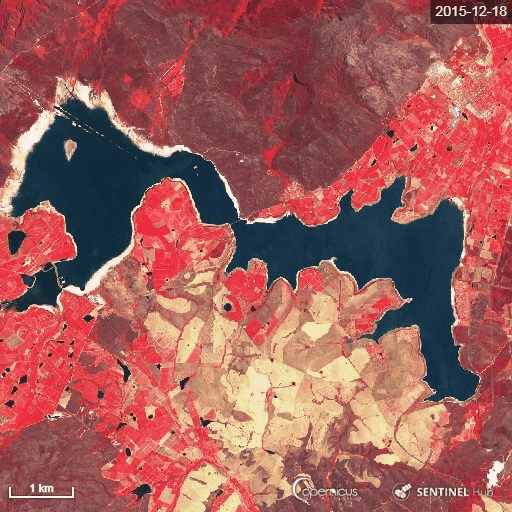Making Sense of the Drought Situation in Cape Town
Published on by Water Network Research, Official research team of The Water Network in Technology
The JRC, with data from its Global Drought Observatory (GDO), provides analytical reports on the crisis as it develops.
Cape Town has come dangerously close to running out of water after 3 years of persistent drought.
Tight water usage restrictions have been successful in stalling 'day zero' - when the city's taps will be turned off—until 2019, buying time for authorities to look for more ways to manage the crisis.

These images clearly show the decreasing water level of the Theewaterskloof Dam near Cape Town. The time lapse was created with false colour composites of the EU’s Copernicus and Sentinel-Hub satellite imagery from December 2015 to May 2018. Credit: CORDIS
The JRC, with data from its Global Drought Observatory (GDO), provides analytical reports on the crisis as it develops.
Rainfall levels in April, May and June, during the wettest period of the year, can give some indication as to the likelihood and timescale for recovery.
But the roots of the current situation run much deeper. A new JRC technical report has found that the massive water shortage, while exceptional, is characteristic of longer-term weather patterns.
With climate change spurring more and more extreme weather events, severe shortages could become an increasingly regular occurrence in the future.
Water shortage and rising temperatures
JRC scientists looked at precipitation in Southern Africa over the past 36 years and found that there exists a strong probability of 50-70 percent monthly precipitation deficit every 5 years (more moisture lost through evaporation and transpiration than is gained through rainfall).
In the Western Cape, the deficit could reach as high as 70-80 percent every 10 years.
The scientists also analysed the occurrence of warm weather events in the region over the same period.
They found an increasing number of moderate to extreme heatwaves in Southern Africa over the last decade.
These two factors combined – the repeated occurrence of high precipitation deficit and more frequent heatwaves – exacerbate water shortages and could lead to more frequent crises in the future.
And with Cape Town's 4 million inhabitants expected to grow by 5 percent over the next 5 years, the demand for water will only increase.
Media
Taxonomy
- Drinking Water Security
- Drinking Water Treatment
- Resource Management
- Water Resource Management
- GIS & Remote Sensing Technology
- GIS
- Drought
- Drinking Water Managment
- Drinking Water
- Water Resource Management
- GIS Spatial Analysis